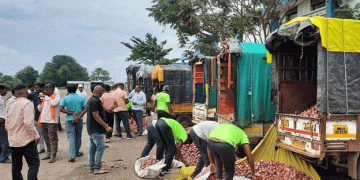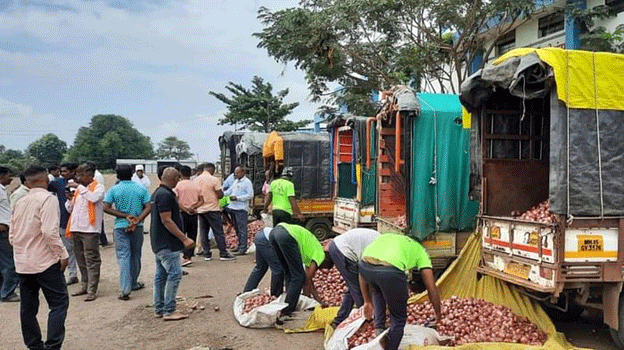For farmers in Maharashtra, climate conditions and government policies shape not only the success of their crops but also their livelihoods. From staple crops like soybean and cotton to high-demand crops such as onion and sugarcane, Maharashtra’s agricultural sector is essential for the state’s economy and the nation’s food supply. However, recent climate unpredictability and policy shifts have caused devastating setbacks for farmers, particularly in high-production regions such as Nashik, Marathwada, and Vidarbha.
Climate Variability and Crop Loss
Maharashtra relies heavily on the Indian monsoon, which typically arrives in June, providing necessary rainfall for the sowing of key crops. However, in recent years, the monsoon has been delayed, with rains arriving only by July. This delay, along with unseasonal rains in critical growth periods, significantly disrupts crop development. For instance, in 2023, Nashik district saw only 70% of expected rainfall, leading to a sharp decrease in onion and grape yields. The delayed rains impacted the growth phase of onions, a major cash crop for Nashik and surrounding regions, leading to poor yield and reduced income for farmers.
According to data from the Ministry of Agriculture, Maharashtra produces approximately 110 to 120 metric tons of onions annually, primarily from Nashik, which contributes around 40% of India’s onion supply. In 2023, the delayed monsoon and prolonged dry spells caused a 25-30% drop in onion yield. This yield reduction directly impacted incomes in onion-growing districts, and similar losses were observed in soybean and cotton yields in Vidarbha and Marathwada due to erratic rainfall patterns.
The Impact of Policy on Onion Producers
In August 2023, with onion prices climbing due to limited supply, farmers anticipated strong returns. However, a 40% export duty imposed by the central government led to a sudden drop in onion prices from 4,000-5,000 INR per quintal to 2,000-2,500 INR. Additionally, a Minimum Export Price (MEP) was set at $800 per ton in November 2023, further hampering export potential and leading to a surplus in the domestic market. Finally, the government’s export ban on onions in December 2023 created a severe price collapse, leaving many farmers unable to cover their costs.
The policy instability surrounding onion exports affected not only the farmers’ income but also increased tensions among farmers toward the government. With such price drops, the Nashik and Dhule districts, where onion farming is a primary source of income, saw widespread dissatisfaction among the farming community.
Economic Pressure from Dairy and Other Crops
In addition to onion and field crops, dairy farmers also felt the economic crunch. Retail milk prices, which sold for around 70 INR per liter, translated to only 22-24 INR per liter for Maharashtra’s dairy farmers. Similarly, other staple crops like soybean and cotton saw prices falling below the Minimum Support Price (MSP), while sugarcane farmers faced delays in payments from sugar mills due to the government’s ethanol production cap.
Maharashtra’s farmers face an uphill battle with erratic weather patterns and volatile policy changes that impact their incomes and financial stability. As agriculture forms the backbone of the region’s economy, there is a need for policy reform that ensures stability and better climate resilience strategies for farmers. Addressing these issues through comprehensive climate adaptation programs and stable, supportive agricultural policies could help protect Maharashtra’s farmers from future climate and economic uncertainties.
































